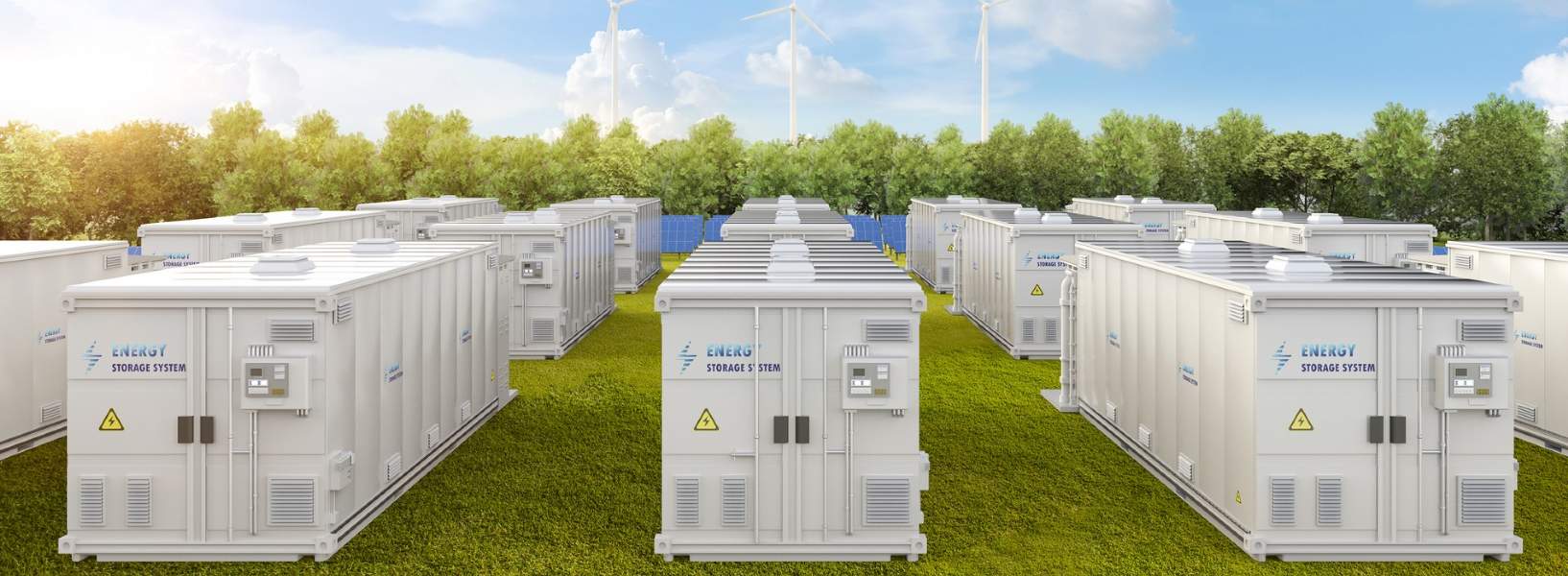Battery Energy Storage Systems (BESS) have revolutionized energy management by enabling the storage and controlled release of energy on demand. These systems are zcritical for the transition to renewable energy, addressing challenges like intermittency and grid stability. Modern BESS technologies incorporate cutting-edge advancements in chemistry, design, and digitalization, making them more efficient, scalable, and sustainable. This article explores the most advanced and innovative technologies shaping the future of BESS.
Overview of Modern BESS Technology
Battery Energy Storage Systems are engineered to store energy from various sources, including renewable energy systems (solar, wind), and release it during peak demand, grid outages, or low production periods. The latest BESS technologies are focused on improving:
- Energy Density: Increasing the amount of energy stored per unit of volume or weight.
- Efficiency: Enhancing the conversion and storage efficiency to minimize energy loss.
- Longevity: Extending the lifecycle of batteries to maximize return on investment (ROI).

Core Advancements in BESS Technologies
Battery Chemistries
Modern BESS leverage advanced chemistries to achieve higher performance and efficiency.
Lithium-Ion Batteries (Li-Ion)
- NMC (Nickel Manganese Cobalt): High energy density, ideal for grid storage and electric vehicles (EVs).
- LFP (Lithium Iron Phosphate): Superior thermal stability, safer operation, and longer lifespan, increasingly favored for large-scale BESS.
- Solid-State Batteries: Emerging technology replacing liquid electrolytes with solid materials, offering higher energy density and enhanced safety.
Flow Batteries
- Vanadium Redox Flow Batteries (VRFB): Excellent scalability and long lifecycle, suitable for large-scale, long-duration energy storage.
- Organic Flow Batteries: Utilize organic compounds, reducing reliance on rare metals and enhancing sustainability.
Sodium-Ion Batteries
- A promising alternative to lithium-ion, leveraging abundant sodium resources for cost-effective and sustainable energy storage.
Hybrid Chemistries
- Combination systems (e.g., Li-Ion with supercapacitors) to balance high energy density and rapid discharge capabilities.
Energy Management Systems (EMS)
Advanced EMS are integral to modern BESS, optimizing energy usage, storage, and dispatch.
AI and Machine Learning
- Predictive analytics for load forecasting and energy optimization.
- Automated responses to grid signals, maximizing efficiency and profitability.
IoT Integration
- Real-time monitoring of battery performance and grid conditions through connected devices.
- Remote diagnostics and predictive maintenance to reduce downtime.
Blockchain Technology
- Enables transparent energy trading and peer-to-peer energy exchanges in decentralized networks.

Modular and Scalable Designs
Modern BESS systems are increasingly modular, enabling customization and scalability.
Stackable Modules
- Allow for easy expansion based on energy demand.
- Minimize installation time and costs.
Containerized Solutions
- Pre-assembled units that can be rapidly deployed for utility-scale projects.
- Mobility allows for temporary installations or disaster recovery applications.
Advanced Cooling and Thermal Management
Managing heat is critical to ensure the safety and efficiency of BESS.
Liquid Cooling Systems
- Improve heat dissipation compared to air cooling, enhancing performance in high-temperature environments.
Phase-Change Materials (PCM)
- Utilize materials that absorb and release heat during phase transitions, maintaining optimal operating temperatures.
Integrated Monitoring
- Sensors and analytics to continuously track and adjust thermal conditions.
Role of BESS in Renewable Energy Integration
Renewable Energy Storage
- Store excess energy during high production periods (e.g., midday solar peak) for use during low production times.
Grid Stabilization
- Provide frequency regulation, voltage control, and spinning reserves to maintain grid reliability.
Peak Shaving and Load Leveling
- Reduce electricity costs by storing energy during off-peak hours and discharging during peak demand.
Microgrid Applications
- Enable localized energy systems for remote or underserved regions, enhancing energy resilience.
Innovations in Safety &Sustainability
Enhanced Safety Features
- Non-Flammable Electrolytes: Reduce fire risks associated with traditional lithium-ion batteries.
- Battery Management Systems (BMS): Monitor temperature, voltage, and current to prevent thermal runaway.
Eco-Friendly Materials
- Use of recycled or bio-derived materials in battery production.
- Focus on cobalt-free chemistries to reduce environmental and ethical concerns.
Recycling and Second-Life Applications
- Development of efficient recycling processes to recover valuable materials from spent batteries.
- Repurposing used EV batteries for stationary storage applications

Applications of Advanced BESS
Residential Energy Storage
- Smart home integrations for backup power and solar energy storage.
- Energy independence through off-grid capabilities.
Commercial and Industrial (C&I)
- Demand charge reduction and renewable energy integration for businesses.
- Resilience against power outages and price volatility.
Utility-Scale Projects
- Massive installations for grid support, renewable integration, and black-start capabilities.
Transportation Sector
- Supporting EV charging stations and enabling vehicle-to-grid (V2G) solutions.
Digitalization & Smart Grid Integration
Grid-Tied BESS
- Seamless integration with smart grids for real-time energy dispatch and demand response.
Virtual Power Plants (VPP)
- Networked BESS systems aggregated to provide grid services as a single entity.
Dynamic Pricing and Demand Response
- AI-driven systems adjust charging and discharging to capitalize on time-of-use pricing.
Performance Metrics &Advancements
Round-Trip Efficiency
- Modern BESS achieve efficiencies of over 90%, minimizing energy losses during charge and discharge cycles.
Cycle Life
- Advanced chemistries and management systems deliver up to 20,000 cycles, significantly extending operational life.
Energy Density
- Solid-state batteries and next-generation materials push energy densities to unprecedented levels, reducing system size and weight.
Future Directions in BESS Technology
Quantum Battery Technology
- Potential for ultra-fast charging and significantly higher energy densities.
AI-Driven Optimization
- Continuous learning algorithms to enhance performance and adapt to changing energy needs.
Hydrogen Energy Storage
- Hybrid systems combining BESS with hydrogen electrolysis for seasonal storage capabilities.
Next-Generation Chemistries
- Focus on silicon anodes, lithium-sulfur, and solid-state batteries to overcome current limitations.


